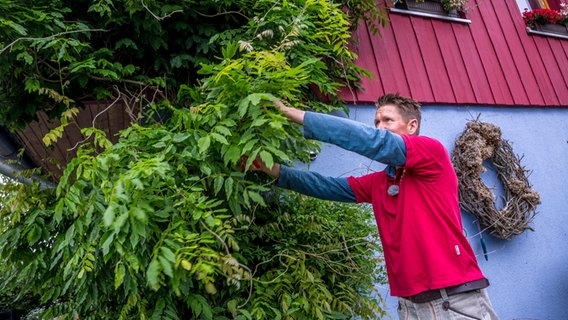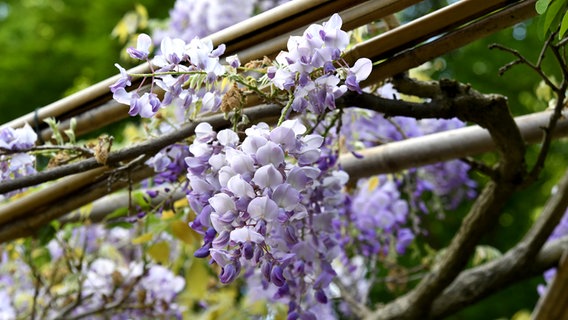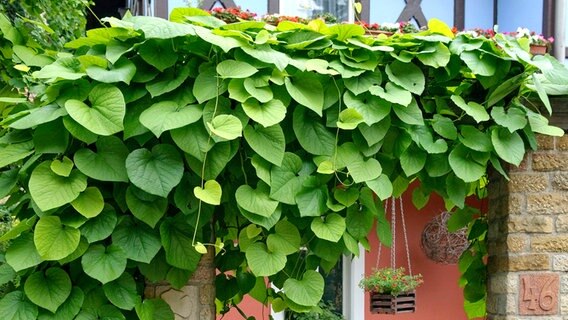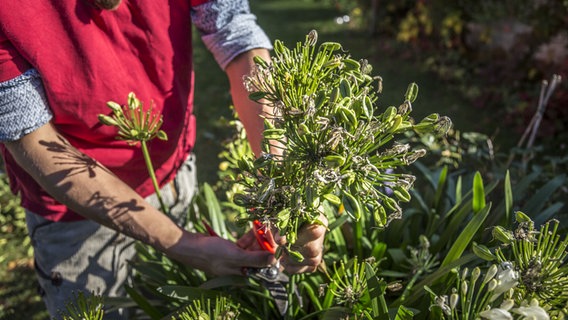Status: 05/24/2023 11:40 a.m
The insect-friendly climbing plant is a great eye-catcher. It climbs up the walls of houses or decorates the terrace as a standard tree. Wisteria should be cut twice a year.
Also known as wisteria or wisteria, this hardy plant is one of the most impressive of the climbing shrubs with its beautiful flowers and the enormous size it can reach. Wisteria can grow up to twelve meters high and ten meters wide. The flower clusters, which are up to 50 centimeters long, hang down like colored waterfalls and attract many insects such as bees and bumblebees with their intense fragrance.
Flowering time from April to June
The first flowers appear from the end of April. The flowering lasts until about June, but in good weather conditions the plant can flower a second time in late summer. Since wisteria is extremely fast-growing, it is ideal for growing on house walls, walls or stable rose arches and pergolas. Downpipes and gutters are less suitable, the plant can crush them under certain circumstances. If you don’t have space for a large climbing plant, you don’t have to do without, because Wisteria is also available as a standard.
Wisteria varieties for climbing and as a standard
The flower clusters of the wisteria not only look beautiful, they also attract many insects.
A distinction must be made between the Japanese (Wisteria floribunda) and the Chinese wisteria (Wisteria sinensis). They wind in different directions: the Japanese wisteria winds to the right, the Chinese winds to the left. This is important to know if you want to grow the plant up a trellis.
In addition to varieties with the typical bluish-violet flowers, wisteria varieties are also available in other colors, such as the pink variety “Pink Ice” or the white-flowered “Snow Showers”. A variety that was bred specifically as a standard is “Blue Dream”. The wood has a particularly decorative effect if you plant it with steppe lilies, iris, ornamental onions, Hostas or columbines combined.
Cut wisteria correctly

Wisteria should be cut twice a year.
In order for wisteria to flower beautifully, it must be cut regularly – ideally twice a year: about two months after flowering in summer, shorten the side shoots to 30 to 50 centimeters in length. The plant then develops new shoots. Cut back the shortened shoots again in winter so that strong flower buds can develop. Leave two or three buds. Older plants that have not been pruned for a long time can also be pruned back heavily, preferably in late winter. The plant will sprout again and then bloom more vigorously.
Wisteria likes sun and nutrient-rich soil

Wisteria loves a sheltered location and nutrient-rich soil.
Wisteria prefers sunny, sheltered locations. The plant loves warmth and tolerates heat. The Garden soil should be rich in nutrients, rather acidic and permeable. It does not tolerate waterlogging and compacted soils. Compost is ideal for fertilizing. When using ready-to-use fertilizer, make sure that the nitrogen content is low, because this allows the plant to grow quickly, but bloom less lushly. The best planting time is in spring or autumn. However, it can take a few years before the first flowering.
Wisteria is poisonous
Wisteria is not ideal for gardens where small children play, as it is one of the poisonous garden plants. All parts of the plant are poisonous. Be careful with flowers and seeds. They are found in elongated, green pods that emerge after flowering.
Further information



